#bl tropes
Text

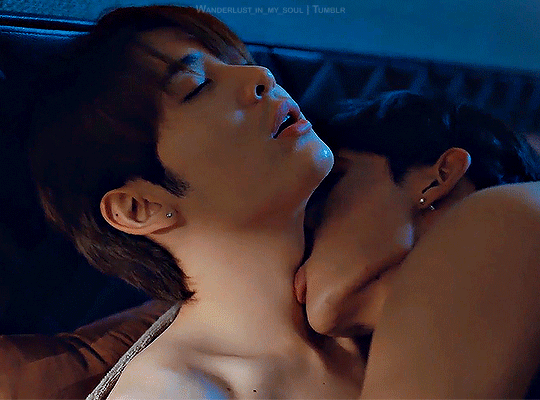
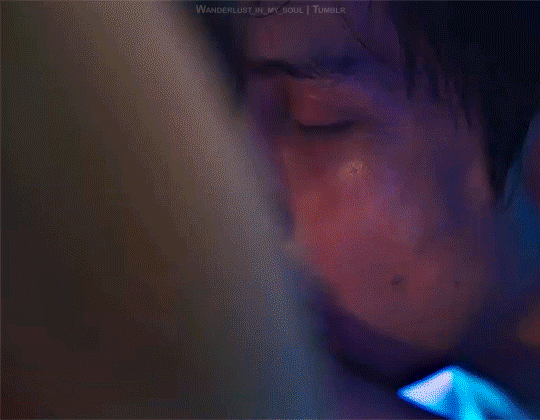


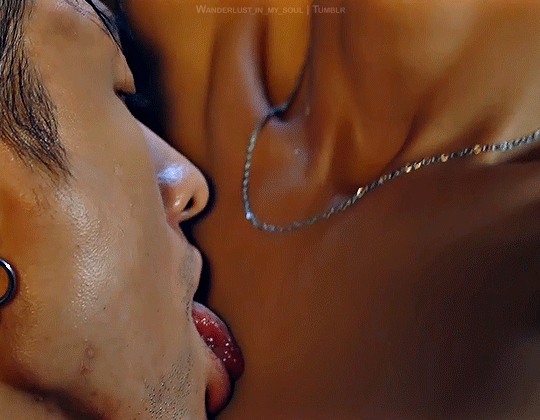
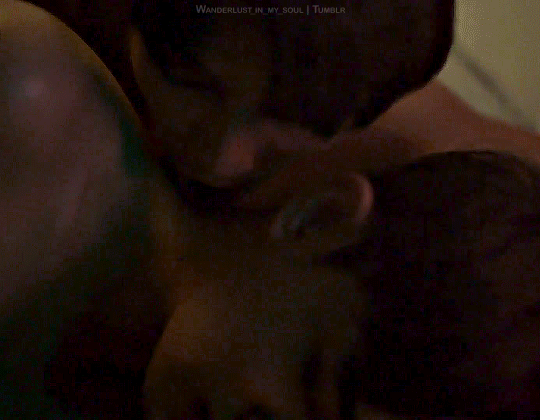
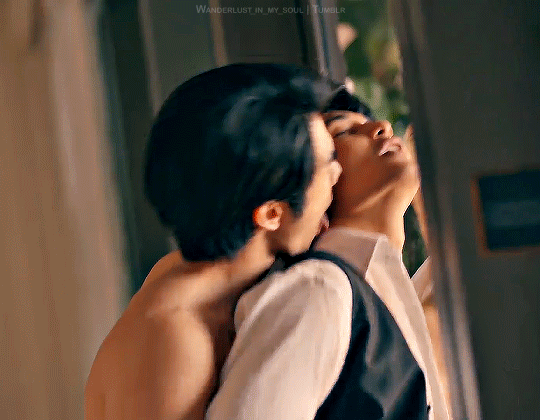


The Lick. (Part 1/?)
Wedding Plan
Bed Friend
KinnPorsche
Tie The Knot
Playboyy
My Story
Stay Still
KinnPorsche
Bed Friend
Wedding Plan
It's my birthday, so let me treat you to this 🤭
Part of my favorite bl-tropes collection, as always in no particular order.
#bl drama#bl series#myedit#multi bl#multibl.edit#bl tropes#lgbtq+#wedding plan#bed friend the series#kinnporsche#tie the knot#my story the series#stay still the series#Thesensuallick#playboyy the series#wedding plan the series
2K notes
·
View notes
Text

Aof when I catch you Aof WHEN I CATCH YOU !
#bl tropes#thai bl#last twilight the series#last twilight#aof noppharnach#jimmysea#mhokday#mhorkday#we’re on episode 6 Day#It’s an Aof show Day#bad buddy
475 notes
·
View notes
Text

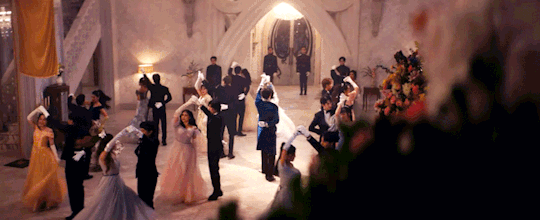
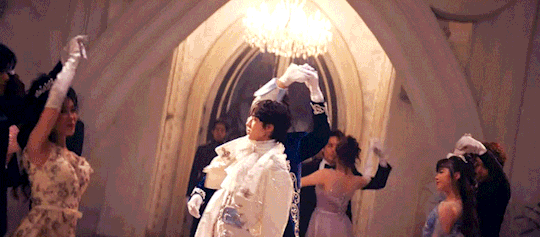
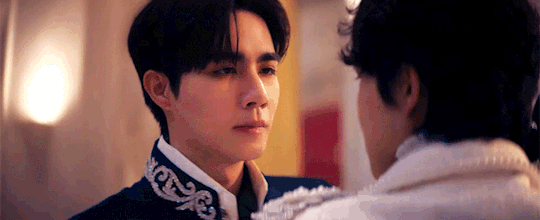

The waltz! The beautiful, formal, waltz!
#the next prince#the next prince the series#thai bl#bl tropes#thai bl series#bl series#thai drama#thai bl drama#asian lgbtq dramas#asianlgbtqdramas#thaibl#thai series#bl boys#bl drama#bl waltzing#my favorite trope
259 notes
·
View notes
Text
nothing hits quite like "I despised the very air you breathed until I was confronted with your humanity, complete vulnerability & it somehow touched my own, & oh, fuck- there's a permanent you-shaped crack in my heart now & the hands that wanted to throttle you are moving to protect you, all on their own."
#enemies to lovers my beloved#this show is so simple but utterly satisfying so far#i can't gif till much later & my sincerest apologies go out to my fellow giffers b/c that last scene was filmed on an actual potato#dangerous romance#dangerous romance the series#perthchimon#kanghansailom#enemies to lovers#bl tropes
1K notes
·
View notes
Text
Biting is a love language!
The sweet sweet way of showing affection by biting has been happening more recently in bl, and I’m here for it.
This is my collection, for now. I most definetly will be adding to it 😇
The Eighth Sense
Jae Won x Ji Hyun (Episode 6)
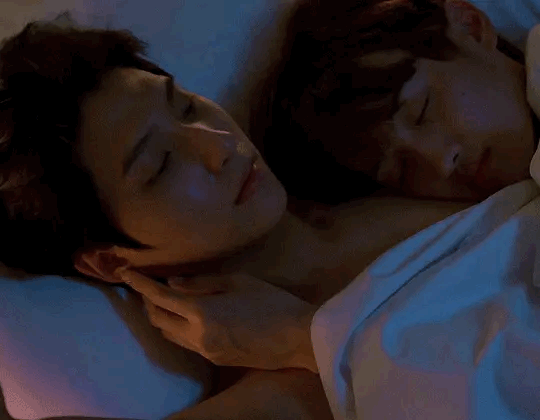
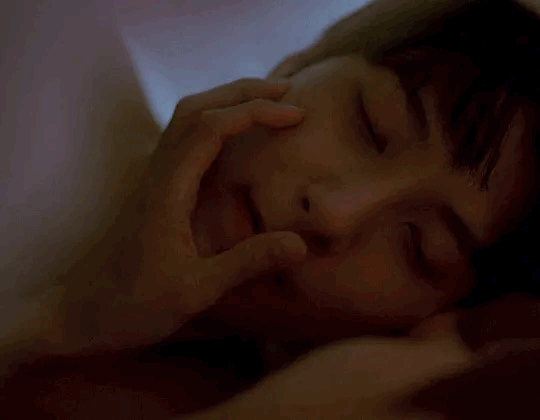
Gifs by @dingyuxi
A Shoulder To Cry On
Tae Hyun x Da Yeol (Episode 5)

Gif by @forcebook
La Pluie
Saengtai x Phat (Epsiode 3)

Gif by @singto-prachaya
Laws of Attraction - Both couples!
Tinn x Charn (Episode 6)
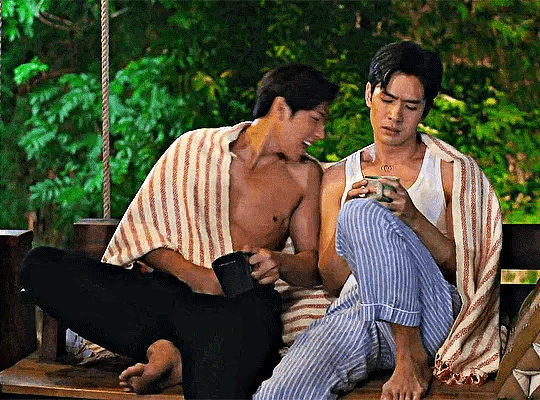
Gif by @spicyvampire
Thee x Thaenthai (Episode 8)

Gif by @pharawee
Secret Crush on You
Sky x Jao (Episode ?)
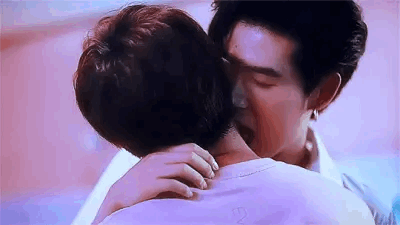
Gif by @stormyoceans
Between us Special
Team x Win (Episode Week 2)
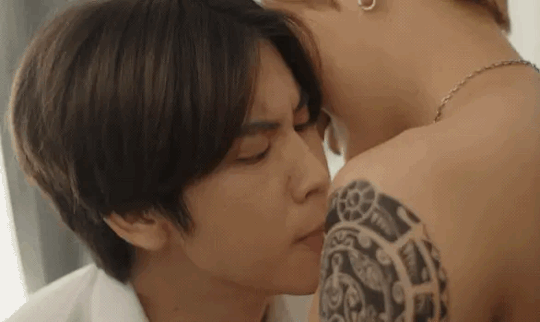
Gif by @hoshinisuzu
Love Syndrome III
Day x Itt (Episode 3)

Gif by @crispywizardtale
Link to part 2 and 3
#biting is a love language#my list so much longer but i hit some kind off limit making this post so i’m splitting it up#i love seeing this#the neurodivergent behaviour!!!#bounprem#the eighth sense series#a shoulder to cry on#la pluie#laws of attraction the series#secret crush on you the series#between us the series#love syndrome 3#thai bl#thaibl#thai bl drama#bl drama#bl tropes#multi bl
299 notes
·
View notes
Text
Seme/uke - long response
A decolonial and subaltern take on three posts on seme/uke dynamics that aims to contextualize them while questioning ethnocentrism. I welcome alternative perspectives, corrections and criticisms.
Post #1: Seme/uke dynamics in Be Loved in House...
@absolutebl responding to @echos-of-ivy
Seme – Uke
About two or more characters in a ship/pairing:
seme 攻め: top (the pitcher) (from origin - attack) also referred to as 左 (left)、タチ (tachi)、トップ (top)
uke 受け: bottom (the catcher) (from origin – receive / accept) also referred to as 右 (right)、ネコ(neko/cat)、ボトム (bottom)
riba リバ: verse (doesn't mind being either a top or a bottom) (from origin - reversible)
seme and uke are sourced from martial arts lingo: seme (martial arts), uke (martial arts) & is related to nanshoku tradition (depictied in ukiyo-e style painting below) of androphilia rather than western norms of queerness. Such differences in culture in queerness is seldom appreciated.

Spring Pastimes. Miyagawa Isshō, c. 1750
Sometimes, androphilic men use seme/uke/riba instead of the following terms which are popular in their queer community:
tachi タチ 凸 - top
neko ネコ 凹 - bottom
riba リバ 回 – verse
Other BL producing countries also have similar terms for seme/uke/riba. And those countries also have terms for top/bottom/verse/side in their queer communities.
For example,
In Chinese BL (danmei), seme/uke/riba -> gong (攻)/shou (受)/hu gong (互攻)[1]
In Chinese tongzhi community -
top: gong (攻) or 1 or 上 or 凸
bottom: shou (受) or 0 or 下 or 凹
verse: bu fen (不分)or 0.5 or 10
side: 不10 or 纯爱[2]
四爱 (fourth love) is the Chinese term for heterosexual relationship wherein the woman tops. When fictionalized, such romances are referred to as GB (girl boy) romance as opposed to BG (boy girl) and the heroine is referred to as female gong 女攻め.
In Thai BL, seme/uke/riba -> me (เมะ)/ ke (เคะ)/ se (เซะ) & their queer community have these terms.
Evolution
When the work does not involve sexual acts, seme/uke/riba is assigned based on speculation (‘what if’) in line with audiences’ preference. There are a bunch of stuff that are employed to determine the dynamics but owing to variation in taste, audience don’t always agree with each other. Since seme/uke/riba archetypes rose to that status with the yaoi (doujin) boom with development of comiket, etc. tanbi, June, original shonen ai and other such types of BL don’t follow these archetypes. Live action which follows, to an extent, the latter tradition, such as Boys Love (2006), also don’t have uke/seme/riba archetypes, instead follows the archetypes that was popularized by tanbi literary movement. Tanbi literary movement was queer in more ways than one. It preceded/birthed BL (Mori Mari) and influenced it.
As no culture is passive recipient [pun intended], different glocalizations of seme/uke/riba dynamics exhibit different features, both within and outside Asia (eg. original English-language BL publication).
IRL
While being top/bottom/verse/side pertains to sexual preference/choices and acts or lack thereof, it is not devoid of other implications. Here are some interplay between these preferences/choices and the implications to consider:
Are these preference/choices innate or socially formed? Or both? Or neither?
What does it mean to be top/bottom/verse/side – within and outside the queer community?
Performance of masculinity, femininity, neither. Which masculinity/femininity? Is that masculinity/femininity performance – marginalized, soft, protest, hegemonic or amalgamated?
How local and global queer cultures influence it?
Is it some kind of conformation/attempt to fit in? If yes, what kind and why?
How are those choices impacted by history (including that of colonialism), legal/political implication (e.g.: pink certificate in Türkiye), local forms of patriarchy & heterosexism, class, nationality, race, skin color, caste, age, employment (including sex work) or lack thereof, physical location & avenues of exploration, abilities and disabilities, access to internet & other infrastructure, education (including sex education), health conditions and access to medical care, etc.
How do they form expectations regarding oneself and others?
While it can be argued that there shouldn’t be any other implication associated with such preference/choices, one can not simply wish them away as it is more often than not linked to certain social realities.
BL as well as gei comi are genres of fiction, telling tales of male androphilia – these are reproductions of imagination entwined with realities, reflecting desires, fantasies and biases plenty.
Conflation
I disagree that uke/seme/riba archetypes are conflated “casually” with bottom/top/verse in narratives and discussions around them. There is a difference that P’AbsoluteBL probably isn’t aware of:
Uke is the bottom in a ship. A character could be uke in a ship, seme or riba in another. For a character to be a ‘bottom’, he has to be sou uke or total/complete uke. It means no matter who he is paired with he will always be the uke.
Alternatively, a sou uke is a character that makes all other characters become seme for him and go after him.
Similarly, a character could be called ‘top’ when that character is a sou seme or total/complete seme. Unless a character is established as a sou seme or sou uke in the narrative, there is always a possibility that those characters are verse. While most BL involves set ships, it is not rare to find characters who are uke in one relationship becoming seme or riba in another. Sometimes, after a time skip, transmigration, reincarnation, etc. BL characters end up switching within a ship.
In Live Action
While there is plenty of riba ships in other BL media, live action has had very few.
These couples were riba in the novel:
Bai Luoyin and Gu Hai – Addicted – The censorship struck right after the couple had their first coitus interfemoris (based on the chronology in the novel).
Lu Feng and Cheng Yichen - A Round Trip to Love
Lan Yu and Chen Handong - Lan Yu
Dom/sub
While the P’AbsoluteBL is allowed to do whatever, I don’t think correlating dom/sub with seme/uke is a good idea in the context of BL because:
BL has a separate speculative fiction subgenre called dom-sub-verse (Dom/Subユニバース) which have its own conventions. It is one of the many subgenres that took inspiration from omegaverse and has grown parallel to it. It takes dominance and submission from the kink community and explores them as innate/biological traits.
It involves characters who are identified as Dom(ドム), Sub(サブ), Switch(スウィッチ), and Usual/Normal/Neutral(ユージュアル/ノーマル/ニュートラル). Along with the standard elements of BDSM in fiction such as safeword, sub space, sub drop and aftercare, it also involves additional elements such as kneel(ニール), glare(グレア) and collar (カラー). There are commands コマンド (命令) that Dom gives to Sub. Sometimes elements borrowed from omegaverse such as heats/ruts, suppressants and professional Dom also appear in this sub-genre.
Dom×Sub ship: Dom is the seme & Sub is the uke.
eg. Hizamazuite Ai Wo Tou 『跪いて愛を問う』 & Rhetoric 『レトリック』 by 山田ノノノ
Mijuku Na Boku Ha Shihai Wo Kou 『未熟な��は支配を乞う 1』 by音海ちさ
Sub×Dom ship: Sub is the seme & Dom is the uke.
Jouzu Ni Dekita Ne Watasesan 『上手にできたね、渡瀬さん』 by 野萩あき
Shoshinsha Dom Ha Hameraretai 『初心者Domはハメられたい』 by やんちゃ
Gohoubi Ni Kubiwa Wo Kudasai (ご褒美に首輪をください) by Naruse Kano
Dom×Switch ship: Dom is the seme & Switch is the uke.
Sono Meirei De Ore Wo Abaite 『その命令で俺を���いて』 by 小夏うみ
れ愛の声で暴いて by 泉門くき
いでおすわりしてみせて by 由元千子
Switch×Switch ship: One of the switches is the seme and the other the uke.
強情なSwitchの躾け方 by ことぶき
Dom×Dom ship: One of the dom is the seme and the other the uke.
コマンドミー、プリーズ by 町田とまと
サディスティックに暴かれたい by 星崎レオ (uke is a Dom, seme’s identity is not made clear)
Kyousei Switch 『強制Switch』 by 彩田あまた
Like most BL genres, it is yet to make its way into live-action BL.
There are plenty of BDSM themed BL as well as training (調教) style BL where seme/riba/uke can be switch or sub or dom.
Problematizing the Problem
Hence, the argument that conflation of seme/uke with top/bottom is “a PROBLEM” is ironic. The main reason given for that argument is that “het consumers [would] conflate (egregiously & incorrectly) top with male/masculine and bottom with female/feminine.” Here are some things that I think is relevant to think about that:
Why would ‘het people’ or any people for that matter think in terms of male-female / masculine-feminine binaries?
Do they think in those binaries only and not other binaries such as wen(文)-wu(武)?
Why think in binaries and dichotomies at all?
Don’t they not think in terms of multiplicity of genders/gender expressions such as various kinds of masculinities and femininities) based off on their local contexts?
Do queer people not make such/similar conflations? (Hint: they do.)
Is it a problem? While this seems to be the popular notion, plenty of scholars from across the globe has dismantled it.
What exactly do P’AbsoluteBL think ‘het people’ conflate riba characters with? Feminine-feminine? Masculine-masculine? Neither? Both? Something else?
There are different conceptions of masculinities within a culture which get reflected in cultural goods, including BL, from there.
Here are some really old depictions:
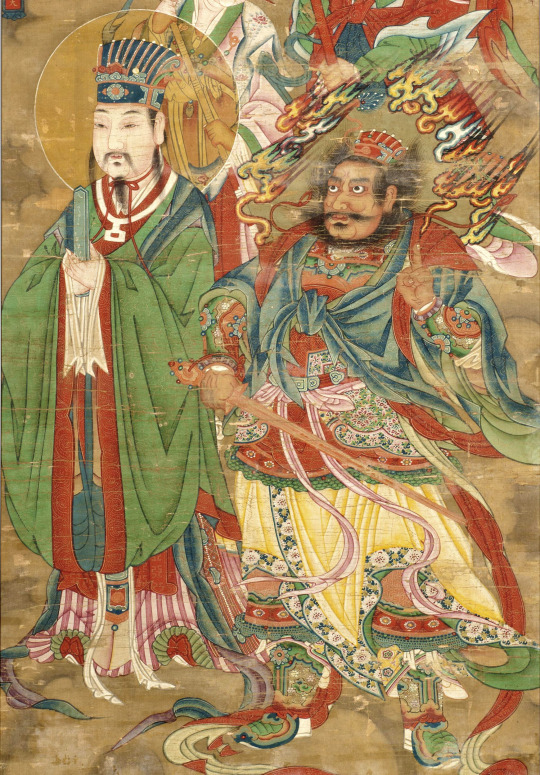
Qing dynasty Chinese Water and Land Ritual painting depicting a divine civil official and thunder god in military regalia. [Wen - wu]
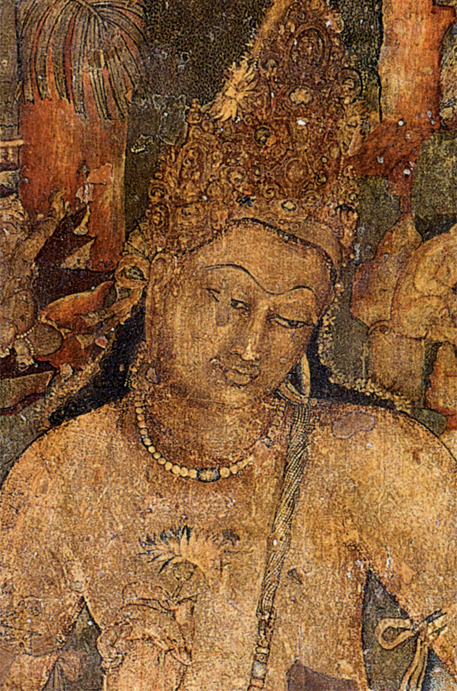

Paintings of Padmapani and Vajrapani on either side of the Buddha, from cave 1 of the Ajanta Caves.
Moreover, if the problem is hinging on a particular understanding of seme/uke: the one in which seme is not feminine or uke is not masculine enough. If latter is the issue, it can be fixed by sticking to BL media with otokomae uke or macho uke. If former is the issue, there’s more than enough works with maiden seme and josou seme. If one is yet to encounter any such works, one is not looking far enough.
Masculinities in BL

Here are three central characters from Finder series embodies different types of masculinities – a lot of it is presentation, physical attributes, age, power and social standing.
Akihito is a young and vivacious uke who happens to be short and sinewy.
Asami Ryuichi is a supadari seme: a guy who is tall, well educated, high earning, with good looks. In addition, he cooks and cleans and cares when he wants to.
Fei Long is tall, beautiful and cunning and can be regarded as a riba character.
But can any of these characters considered not masculine by regular standards? Isn’t Akihito masculine enough for his age? And if we are to compare Asami, we are sure to find him lacking but then give him time to grow. They have a dozen years between them. Moreover, can average men stand comparison with a super darling? But then in the grand setup of patriarchy, isn’t power concentrated in the hands of the older men who dominates even the super darlings, both in real world and fictional ones.
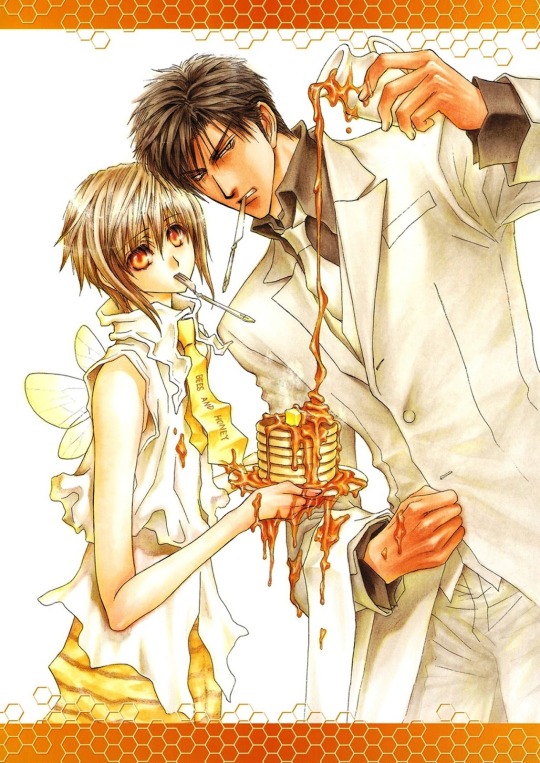
Ayase Yukiya & Kanou Somuku from No Money
Consider the case of Ayase, would you call him a “feminine” uke? Probably yes. He is small in stature - petite and cute. He is definitely very small in comparison to his seme Kanou. They probably have one of the most exaggerated size differences and an extreme case of the traditional pairing.
The traditional pairing comes from the customary practice of androphilia in pre-modern Japan. It involves relationship between a wakashu and a nenja or from the tradition of nanshoku. The former is not considered a man by the period’s standards and is considered a third gender by some scholars. The latter is considered as a mentor and lover for the former. While the traditional faded with ‘modernization’, tanbi literary movement (among others) kept alive remnants of it through the writings of the likes of Yukio Mishima.
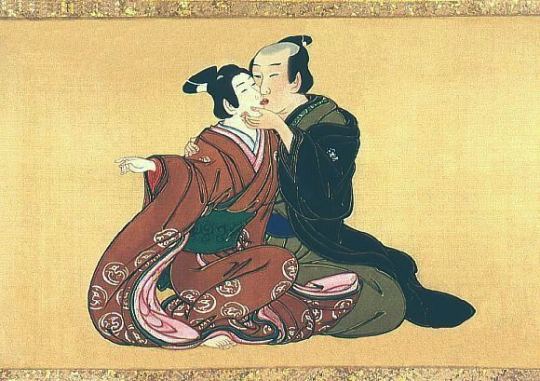
Note that the youth on the left is wearing a kimono whose style (furisode) and color was considered appropriate for adolescents of both sexes but not adult men, which along with the partially shaved pate denotes the boy's wakashū age status while the exposed bare feet indicates the purely sexual demeanor.
The traditional pairing has clearly inspired Japanese mangaka both BL artists and others. Look at the wakashu in customary androgynous clothing, younger, fairer and even smaller than the nenja, with relatively less experience being embraced by nenja who is in customary male clothing.
Check out more shunga about nanshoku to see visual ancestor of “yaoi”. The visual legacy continued with the likes of Go Mishima. The queers did it first.

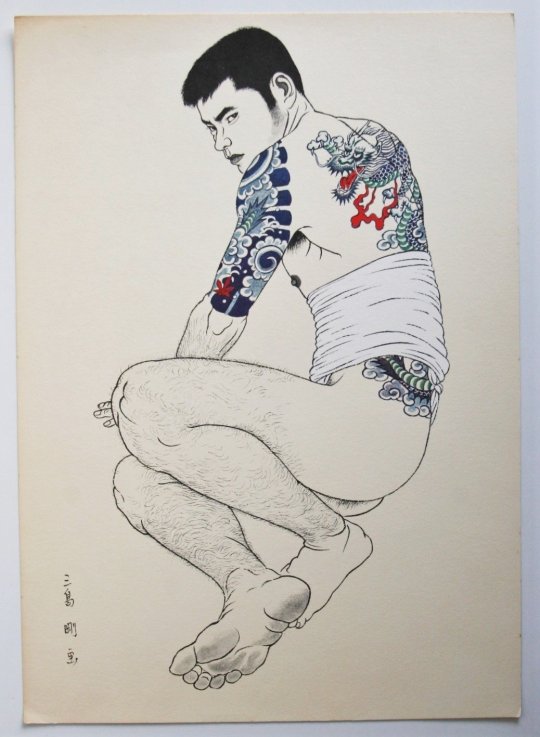
From the series "Mishima Go Book of Young Man" - Japan - 1972 (Showa 47)
Ayase in No Money fits into the wakashu ideal. Moreover, the creators of this manga explicitly differentiated between feminine uke with wakashu uke by juxtaposing Ayase with Someya who embodies traditional femininity.
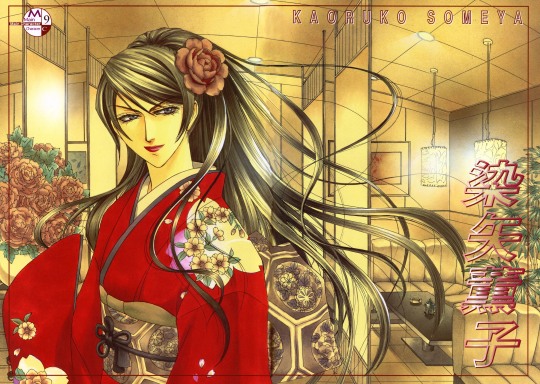

Someya and Honda from Henshin Dekinai
Putting it into perspective, it is noticeable that many a BL involves similar pairing. A lot of criticism BL faces is when it sticks to nanshoku dynamics. Interestingly, critics who can’t imagine genders beyond masculine and feminine, fail to tell apart “feminine” characteristics from wakashu characteristics. But there is no dearth of such dynamics getting subverted in numerous ways in BL:
ship with younger, lower class, petite, androgynous or any combination of customary wakashu characteristics in seme/riba.
ship with all parties being of similar age, class, physical attributes, experience, etc.
Emancipation
Shouldn’t typical uke archetype be seen as an example of subversion of the main character masculinity that dominates media landscape? Shouldn’t they be exalted for being what they are? Uke archetype that allows all genders to project onto and gain pleasure from, is that any less than a marvel in itself?
Pursuer & Pursued
In order to analyses if there is a shift in seme-uke dynamic, the P’AbsoluteBL employs the following to categories who is active:
who is pursuing whom
who makes the first call in terms of declarations and physical touch
who seems to be more in charge of the relationship
In BL, these are never reserved for seme/uke/riba. Who takes on which role depends on the narrative. BL rarely have fixed pursuer-pursued. All parties involved in a ship take on active role in different circumstances.
Take, for example, the original edition of Ossan’s Love, Hasegawa Yukiya employs certain indirect tactics to pursuing Soichi Haruta such as cooking, cleaning and caring for him. (These are tasks that seme/riba/uke usually engage in lighter BLs to gain and retain the attention/affection of the one they are pursuing.) Hasegawa also engages in activities they do together as a means to grow closer.
Once he learns of his love rival, he switches up the tactic. He pursues more directly and aggressively. Soichi rejects him. He withdraws and returns to the original tactic but without attempts to grow closer.
Soichi feels the loss and tries to get close to Hasegawa but is brushed off. He does not back down. Instead, he takes on a more aggressive route of pursuit - making amends and chasing after Hasegawa.
What P’AbsoluteBL implies with “I think BLIHID’s main couple has a REALLY weak seme/uke dynamic from the get go” is made abundantly clear in with “ShiLei does a lot of active pursuit, also he’s very self actualized.” Here, using pursuer/pursued would have sufficed. Instead, P’AbsoluteBL chose to disappropriate established terms ‘seme/uke’ and imbibed them with implications of “active pursuit” as well as “self-actualization” [regarding queer identity] that seme/uke/riba doesn’t carry originally. Most of it based on biases built on equating all BL to one type of BL: the one with traditional pairing that follows royal road progression.
What P’AbsoluteBL actively avoids discussing is that Beloved in House is basically following the super popular ‘domineering president’ plot based on a BG romance.
Live Action Struggles
P’AbsoluteBL mentions an imagined ‘struggles around seme/uke’ in live-action BL. I think the actual issue plaguing live action BL is the struggle to balance business and other interests while being able to do justice to the diversity within BL as a media genre.

source: (chil-chil.net)
In the chart:
ほのぼの – heartwarming – Example: Restart After Come Back Home
コメディ – comedy – Cherry Magic
ダーク – dark – Sing in Love
シリアス – serious – Cornered Mouse Dream of Cheese
キュン – exciting (kyun) – Mr. Unlucky Has No Choice but to Kiss
Japan has trouble in diversifying its live-action in terms of sub-genres and treatment/mood. Even Thailand, despite the amount it produces have trouble offering variety. Riba couple, maiden seme, yarachin characters, yandere X yandere ship, etc. are either very rare or non-existent in live action BL. Moreover, live action BL is seldom explicit and are mostly in the speculative territory with seme/uke/riba dynamics, making it all the harder to diversify.
Tbh, what fascinated me the most is the “I kind of automatically cringed” part of the question. I would love to know what brought about that reaction. I am sure that it would help shed some light on discourse surrounding BL in general.
Post #2: Blushing Maiden Trope & Seme/Uke
Discussion (intended and in italics) between an anon, @heretherebedork & P’AbsoluteBL on actions and reactions during physical relationships.
The discussion centers around “the character placed into the stereotypically feminine role” being repulsed/reluctant/hesitant when it comes to physical relationships. It is directly attributed to “purity culture in BLs”.
BL have a complicated relationship with “purity” or being “clean”. Tanbi roots of BL hinged on sexuality and obsession with beauty to the point of decadence. Shonen ai (original meaning) works also had characters who are usually promiscuous for one reason or the other, never forming very deep relationship (at least not enough to stick to monogamous unions for long) yet endlessly entangled with other characters, often baffling non-queer characters in those works.
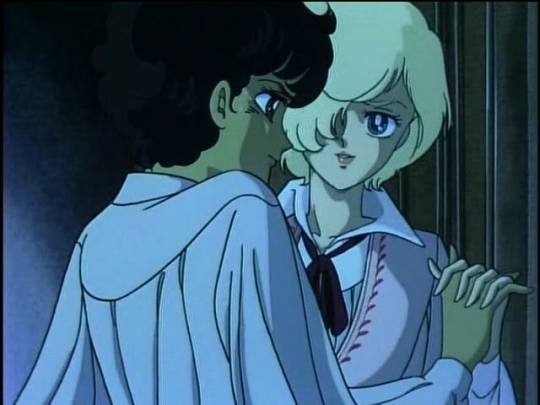
from Song of the Wind and Trees
*
[Inviting readers to hazard a guess: who is the seme and who is the uke. Answer at the end of this post.]
*
But how explicit the depiction of physical relationships has varied in BL with time and space. Japanese BL with the self-published BL (aniparo / yaoi – original meaning) boom saw very explicit depictions side by side with the commercial BL which have barely any explicit content or those which take a closed-door approach. Now Japanese BL have a wide range in terms of explicit content and have grown to incorporate elements from other genres including gei comi. Korean BL is similarly doing well. It is not uncommon to have chapters or parts of chapter in manhwa and novels dedicated to the celebration of physical relationships. Thai BL also have no dearth of explicit content, especially in web publishing.
Chinese BL in its early days had lots of explicit content, especially in self-publishing. But as censors started taking notice and cracking down, authors and platforms clamped down. Most BL were purged of any & all explicit content. Some of it migrated to Taiwanese platforms, AO3 & other foreign hosts. Now all danmei published is “pure love” devoid of even allusion to depiction of any physical relationship beyond above neck action.
When it comes to BL live action, things are a little different. In Japan and to an extend abroad, there has always been overlap between audience of BL and audience of Japanese GVs and pink eiga. Moreover, early live-action Japanese BL was probably aimed exclusively at hardcore BL fans. They were way more explicit on average and did not always involve physical relationship between the main ship.
Same seems true about early live-action Chinese BL. A Round Trip to Love Part 2 (2016) even had bondage and SM scenes which wasn’t there in the novel; but then it didn’t have the hard-earned happy ending the novel had either. But now, even dangai with “socialist brotherhood” (社会主义兄弟情) can’t be aired. Meanwhile, Japan’s average BL today lacks much explicit content. This isn’t to say that it doesn’t drop an occasional Sei no Gekiyaku (2020) once in a blue moon. Here are my speculations to why more of those doesn’t get made.
There is another reason for “purity culture” in BL.
Sathaporn Panichraksapong, an MD of GMMTV, a major producer of BL series, claimed that audience members who are mainly heterosexual women look for romantic relationships among the characters rather than sexual relationships.
We know that our audience are [sic] women. Women want to see only two boys having romantic moments together. They don't want to see sex. Sexual relationships in BL are for a gay audience. That's why in SOTUS the Series we have only two kissing scenes. With only these, audiences were already screaming. This is enough for them. (Interview with Sathaporn, GMMTV, 10 Aug. 2017)
Jirattikorn, Amporn. "Heterosexual Reading vs. Queering Thai Boys' Love Dramas among Chinese and Filipino Audiences." (2023).
As Jirattikorn goes on to highlight, this [wrong] perception about the audience (“women”) have changed ever since.
While early BL series tend to portray pure love without showing many sexual relationships, later BL series started to show more sex scenes between the two male lead characters.
Jirattikorn (2023)
“It’s always the character being pursued, who is typically in his first relationship, who Never Thinks Of Sex. They’re often very sweet and innocent and wide-eyed.”
While heretherebedork attributes it to “purity culture”, it can be argued that this has to do with what audience wanted:
I like the way they portray love in Thai BL. It is a kind of puppy love. BL of other nations, like Chinese BL, are darker. In Thai BL, two male characters often start off friends, then develop feelings for each other. It is very light, very sweet. (Krissy, f, 27, Philippines)
Jirattikorn (2023)
and what media houses thought they wanted, as evidenced by Jirattikorn’s interviews with BL fans. This is not to dismiss struggles with purity culture which is often a very slow part of decolonialization.
P’AbsoluteBL goes further to the argument that “purity” is associated with seme/uke dynamics in BL and maps it to typical het pairing (BG):
The stronger the seme/uke dynamic (the more heterosexually dysmorphic and less actually gay) the more likely this trope will manifest. Simply put: the man (because he is hooah a MANLY MAN DUDE) wants sex but the woman (delicate pure flower of cleanliness and joy) does not. And if she does want it she is a DIRTY, worthless, whore - so she MUST protest sex (GASP) at every single turn. (Seme is acting the male and uke the female in these kinds of narratives.) *please sense my sarcasm dumb interwebs, mm’kay?*
It’s true that the argument seems persuasive but is it right? Probably not. Seme, uke and riba characters can be divided into strong/weak categories based on their characterization - with the strong ones being those who pursue, take initiative, most likely to initiate intimacy at least for their first time, etc. and weak ones being those at the receiving end of pursuits and initiatives. Pairing a strong one with a weak one is probably more traditional –
strong riba x weak riba like in Addicted (at least before time skip)
strong seme x weak uke like in Old Fashioned Cupcake
weak seme x strong uke like in Saezurutori Wa Habatakanai (at least before time skip; pavam Doumeki)
compared to those with both parties being strong (which leads to delectable friction and sparks flying when done right) or both being weak (which leads to audience wondering: will either of them do something? No? Very well!).
BL’s sex negativity
Seme gets overwhelmed by his lust for uke, acts aggressively and has to be shut down or warned off.
Not only seme, uke and riba characters does this too. P’AbsoluteBL attributes “getting overwhelmed by lust” and “acting aggressively” to seme when it can be attributed to both uke (襲い受け) and riba as well. Other than acting aggressively, characters may employ seduction (eg. Xia Shang Zhou in You Are Mine (2023) - tried and failed & Charlie in Pit Babe (2023) - successful) and/or manipulation (Color Recipe by Harada).
Seme won’t take no for an answer because his needs are too great and his needs take precedence (he’s “the man” after all) and the uke is just TOO CUTE how could anyone resist? (After all the seme is only gay for this one guy because he is so cute. Everything, therefor, is the uke and his cutenesses’ fault.)
Moreover, P’AbsoluteBL is probably not aware of kawai seme who employ their cuteness to get uke to lower the guard and to seduce. Cuteness is clearly not a uke prerogative.

Like the sailor-costume wearing seme on the cover, cuteness is sometimes invoked through conventionally women’s clothing, cosplaying (maid, sailor, nurse), etc.
If the seme makes the choice to have sex for the uke, then the uke is not at fault and is still technically innocent. Only if an uke wants it, is he actually impure (or actually gay). In H4 when they both comfort and sex shame the bottom after the rape sequence, this is the narrative’s mentality. (A man who does not want sex is assumed to be able to fight another man off.)
Oh and ALSO, the seme must read the uke’s mind and know what the uke really wants.
I don’t even know what went into this argument. There is an entire subgenre: 調教 BL (training / conditioning) that is focused on pleasure training. If a character (seme/uke/riba) wants sex in a narrative, it usually only means that their partner is on the right track. Moreover, when a character wants, actively seeks and are denied intimacy for manipulation reasons, then their partner is made out to be cruel (either 鬼畜 or ゲス・クズ).
In other words, if the uke is interested in sex, he’s made impure by this interest.
Sex of any kind is an act of desperation and indicates lack of control and therefor diminishes both parties but particularly the uke, therefor the uke shouldn’t have to take responsibility of wanting sex, so the decision must be made by the seme for both of them. He is being a “good seme” by doing this. The uke, therefore MUST appear reluctant to have sex, or he is not a good/pure/virtuous person.
Honestly, I haven’t come across BL which gives off this kind of message. However, two-faced scummy characters (seme/uke/riba) get to employ hypocrisy, which includes slut-shaming, to humiliate characters they are shipped with but then such narratives are built to illicit hatred (for scummy characters) and angst and often punished with:
(a) unhappy ending for the couple
(b) breaking up of the ship
(c) groveling which may or may not end in redemption of the scum
(d) switching within ship – uke turns into riba/seme or seme turns into riba/uke – or shift in power dynamics (rich character becomes relatively poorer, junior from school becomes senior/superior in workplace).
A lot of readers find such dramatic plots satisfying and hence it is a successful subgenre.
*
Can you guess the seme in these 20 BL manga? Try this quiz on renta.
*
Post #3: How do they determine who will be archetype seme/uke?
Discussion regarding seme/uke determination in BL: @elynn0723 & P'AbsoluteBL (intended and in italics).
I think your confusion is partly nested in the fact that seme/uke is not about who fucks who, not really. Certainly not anymore. Seme/uke are narrative archetypes not physical acts.
Disappropritation. Discussed above.
I should say for the record that personality is NOT sexual preference.
P’AbsoluteBL goes onto give examples (all of which are fictionalized in different genres – GB, BL, etc.) but probably due to being limited by lack of exposure, goes onto ask, “How weird that anyone would think queers do this.” Queers do this. If one is willing to look beyond LGBTQIA+ form of queerness (which is born and brought up in America), one can see queer possibilities. For example, Kothi-Panthi queerness in India/South Asia. It is probably a good idea to pay attention to it when generalizing queerness given how big India/South Asia’s (queer) population is. There are very many similar forms of queerness in other parts of Global South. In many cultures, sexuality doesn’t inform identity but sexual preference does.
[ Aside: Kothi-Panthi model of queerness
This model doesn’t work for whole of India – region (India is so big and heavily populated - different sexual cultures and practices); linguistics (different terms in different region, same terms different meanings in different region, decline of Farsi (used in queer spaces in Delhi) and other queer argot/cant and their replacement with American English internet slang); class & caste (LGBTQIA+ being self-identification of mostly urban/rurban, upper class, English educated v/self- identification common among the sex workers, working class and other lower classes in rural as well as urban spaces who are excluded from consumerist queerness);
NGOfication of queer movement & action; global queering and neoliberal take over leading to americanization –– intermixing & “gay” (and other terms) being used differently by different classes.]
How do they determine who will be archetype seme/uke?
P’AbsoluteBL points to narrative roles - who is “after” the relationship more, and then goes onto claim “the heroine is the main character, the love interest is her love interest. It’s decided for them because it’s a romance novel.” I don’t know if this helps explaining either seme/uke/riba archetypes in BL or pursued/pursuer. Aren’t there romances where hero pursues heroine and the other way around? Aren’t there romances where both party pursue each other?
Even if we assume that androphilic female audience is projecting the sexual mores & expectations imposed on them onto male characters, then by the very act aren’t they subverting those expectations.
How do they determine who tops?
P’AbsoluteBL provides the following schema:
seme = active pursuer
since active pursuer is “the male role”
he should do the penetrating
which has to be done
P’AbsoluteBL also gives a term for this association: heterosexual dysmorphia - "the idea that any couple must fit into predetermined binary gender roles". This is probably coming from a place of ignorance since the example given is confined to musings about sexism concerning the upper class in Global North.
Also, at least in the ambit of Kothi-Panthi sexuality, fitting into masculine top-feminine bottom dynamic doesn’t place them into any predetermined binary gender roles. Instead, it only places them in the fluid space of multi-genders: can/are seamlessly float(ing) between being kinnar/hijra/ali and being “cis-men”.
If one is to ask the question: “Which one of you is The Girl?” to a kothi-panthi couple, the kothi would tell you without hesitation: “I am The Girl.” Might even asked you in turn, “Couldn’t you tell?”
Kothi [is the word used by] effeminate men who desire to be penetrated by "real" men whom they call ‘panthi’.
Queer Movements by Paromita Chakravarti & Aniruddha Dutta
Seme/uke/riba archetypes are imbibed with different traits and different spin on personalities that a seasoned BL sommelier might be able to spot easily but would confuse those who are less familiar with all that the genre has to offer.
The following excerpt from an analysis by @ranchthoughts reflects the most popular idea about seme/uke dynamics.
Most BL shows can be read through a lens of seme/uke dynamics, which originated in yaoi. The seme is the “pursuer” character and the uke is the “pursued”. There are certain physical (height, skin colour, etc.), social (age, wealth, social capital, etc.), and personality (active vs. passive, extroverted vs. introverted, flirtier vs. shyer) markers which are typically associated with either the seme or the uke. For example, semes tend to be taller, wealthier, older, flirtier, tanner, more active, and have a higher social status, while ukes tend to be shorter, poorer, younger, shyer, paler, and have a lower social status. “Seme” and “uke” roles are also sometimes conflated with masculinity and femininity (semes are “masculine” and ukes are “feminine”) and sexual preferences (semes are dominant and tops and ukes are submissive and bottoms). There are also tropes associated with either the seme or the uke, like ukes typically give cheek kisses and semes forehead kisses.
Thus, things like height, age, wealth, personality, presumed sexual preference, and the role they take in tropes can index the character’s status as a seme or a uke, and in turn the character’s identity as a seme or uke in the narrative (pursuer vs. pursued) indexes a character’s personality, sexual preferences, etc., however unrealistic and simplistic that is in real life. In a BL, we would expect the seme (pursuer) and uke (pursued) characters to exhibit most, if not all, of the associated seme or uke traits and roles in tropes, though this is not always true (and some BLs have little to no seme/uke dynamics at all).
There are two interesting things about such an understanding of seme/uke dynamics:
It closely resembles nenja/wakashu dynamics (and its cousins) in the customary and mostly age-stratified androphilia in pre-modern Japan.
Live action BL, at least the ones that were current and popular, stuck mainly to a single type of dynamic: pairing of one seme of a particular kind (スパダリ – super darling) with one uke of a particular kind (ヘタレ – milquetoast). There are barely any riba couple. It is painting picture of BL in monochromes. So much so that Bad Buddy and My School President were seen as some path breaking feat and a break away from “yaoi” tropes by live action audience, rather than seeing them having just another (or less familiar) set of yaoi / BL tropes.
What P’AbsoluteBL identifies as “heterosexual dysmorphia” in “yaoi” is basically what BL inherited from Japan’s pre-modern androphilia including “femininity” in uke from chiago, wakashu and androgynous Kabuki actors and (hyper)masculinity in seme from nenja and others who enacted “the male role”. BL did not passively receive any of these. And for moe, artists and audience alike, subverted it all.
This is true for all tropes that are attributed to seme/uke.
Height difference – Earliest BLs had petite bishonen pairings. Yaoi introduced height differences – all of them:
tall seme x short uke
short seme x tall uke (this is probably the most sexualized height difference)
tall seme x tall uke (with little to no difference)
both/all short riba CP/ship
both/all tall riba CP/ship
tall riba x short riba
short riba x tall riba
Cuteness – Used to establish how irresistible a character (seme/uke/riba) is irrespective of their attitudes and behavior are. Oft part of seme’s seduction tactic, especially when uke has a weakness for cute things. Even when cuteness is not one of the seme’s attributes, it is invoked either actively by serving kawai in speech or through actions including cosplay; or passively like in the following example where a typical super darling seme, Asami Ryuichi from Finder unintentionally triggers moe in Takaba Akihito (his uke) by cuddling a baby.
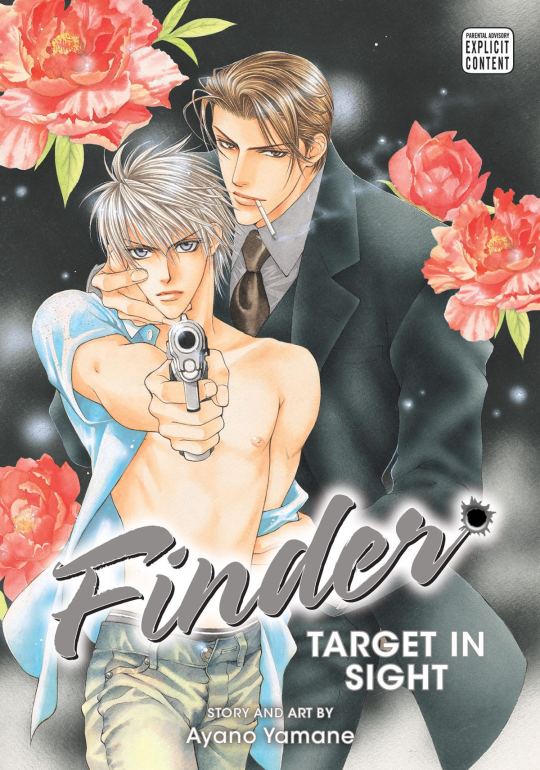

Uke’s cuteness is exploited to establish a sou uke (an uke every other character turns seme for) or subvert the same like in No Money where one of the epitomes of bishonen cuteness, Ayase (uke), who manages to enthrall others however isn’t a sou uke as one might expect and thus subverts the wakashu trope.
Moreover, Kanou (seme) wasn’t initially drawn to Ayase due to his cuteness but due to Ayase’s kindness that lifted him out of the abyss of despair, when Kanou was at his weakest.
3. Bulk – BL have main characters (seme/uke/riba) with varying bulk and body types. There is far less diversity when it comes to Live Action BL.
4. Blushing maiden/virginal innocent trope – applies to all sorts of BL characters.
Edit: Conclusion
1. Surprisingly, ethnocentrism and loud echo of colonial masculinity in particular seem to permeate the discourse surrounding BL.
2. I really wish live action BL would have as much diversity as other BL media. Why is it so slow to diversify? Is it because of business interests? Is sticking to super darling X milquetoast pairing with royal road progression a sensible business decision? Or is sexism promoting wrong impressions of what audience want?
3. How come the Japanese terms "seme" & "uke" are used a lot but not "riba"? Where did live action BL audience learn these terms?
***
Yaoi = [how P'AbsoluteBL uses it] synonym for ボーイズ ラブ (boys love) manga.
= [popular use in anglophone BL manga fandom] BL manga with explicit content; as opposed to shonen ai.
= [original meaning] derivative works, which were mostly plot-what-plot type, that are self-published (doujinshi)
Answer to a question posted above: Gilbert Cocteau – uke in Song of the Wind and Trees

Below is the seme: Serge Battour

from Song of the Wind and Trees

Earliest BL manga had very pretty seme/uke/riba characters (if we are to call them so) and were not too preoccupied with "manliness" or a single type of "masculinity". But, they were surely obsessed with bishonen.
-
[1] 互攻 is also used to indicate POV switching between gong and shou in fiction.
[2] 纯爱 is also used to indicates asexual androphilia.
CP/pairing - involves 2 characters. Ship - involves 2 or more characters.
Inviting @waitmyturtles and @lurkingshan to share your thoughts if any (since I have noticed you guys use the terms "seme" & "uke" as well). Hope you guys don't mind the mention.
#japanese bl#boys love#bl history#thai bl#chinese bl#danmei#bl trivia#bl tropes#seme/uke#seme#uke#riba#korean bl#taiwanese bl
85 notes
·
View notes
Text
The Thumb Kiss Trope
Recently (like yesterday) I rewatched Wedding Plan and in ep 3 a thumb kiss was featured that was kind of glossed over by us all. Ever since then (like the past 12 hrs) I've been thinking about how I need more of this trope in my life. It's such a good trope and so under-used.
Sure we have different variations of a barrier kiss; My School President used that trope as a running gag up until the last ep. And we see people place their full hands between their lips. TinCan had a really cute kind of transfer kiss featuring Can's hand in Love By Chance, but nothing hits like the Thumb Kiss trope for me.
So why is the Thumb kiss such a vibe for me? Because it's the flimsiest of barriers to prevent a real kiss. It highlights the tension between the two characters, they both seem to be very interested, but it just isn't the right time for a real kiss yet. In my mind that thumb is a bookmark for the real kiss that is coming soon.
DON'T WORRY I HAVE EXAMPLES!
SoloGui from Oxygen the Series. We get their thumb kiss in ep 4. There are a couple reasons Solo does not kiss Gui in that moment; he didn't have permission, he didn't want to push Gui too much, and mainly because he was under the weather. But he couldn't just let the moment pass without a brief romantic interaction. At this point in the series, Solo is really just trying to gauge Gui's interest in him so he can figure out how to proceed.
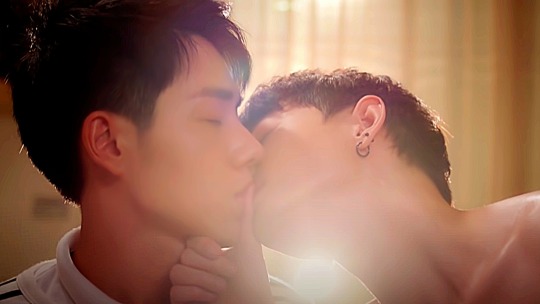
Of course Gui responds like it's a real kiss, he kisses Solo's thumb too and then they both pull away. In the novel version, Gui is actually disappointed about Solo's thumb being there because he wanted it to be a real kiss (he's never kissed anyone before despite being a popular campus moon). BY THE WAY Nut Supanut from Pit Babe stars in Oxygen and it's a really cute, lowkey series with good communication. I highly recommend it, ALSO THE SIDE COUPLE IN THAT SERIES IS TOP TIER!
NueaToh from Secret Crush on You. Their thumb kiss happens in ep 2. It's not so secret that Toh is in love with P'Nuea, but we soon discover that Nuea is also kind of enamored with Toh. He goes out of his way to hire Toh as a photographer for his sister's birthday party (btw she's a fan of Toh's photography) and anyways, Toh and his bestie Jao are hanging out with Nuea and his friends and they play that good ole King's card game (you know the one! It's the only time we see cards in these series) and Nuea and Toh are dared to kiss.

We know Toh wants to and so does Nuea but Nuea doesn't want to turn his first kiss with his crush into a party game so he literally smirks at Toh and pushes his thumb between their lips. Nuea knows Toh likes him and he's sure Toh would be fine with their first kiss happening any kind of way, but Nuea wants to make sure Toh knows he's kissing him on purpose so he's going to wait.
ALSO half the cast of the Sign are in SCOY and I HIGHLY recommend the series to anyone who hasn't watched it, Billy is PHENOMENAL as Nuea. Saint produced SCOY as well and it's a good mix of cringe, spice, and pretty much all the characters are queer. I just hope you don't mind stalking as part of the plot (I can explain more if you're interested! I promise it's not that bad)
LomNuea from Wedding Plan. Sailom and Namnuea are vibing from Day 1 but Sailom and his fiancée Yiwa have contracted Nuea to plan their upcoming wedding. To Nuea, Sailom is going behind Yiwa's back to pursue him and he's having mixed feelings about that. Sailom is actually just a man in love with his wedding planner and trying to find the best way to explain a delicate situation without sounding selfish or manipulative.

Their thumb kiss happens in ep 3 and at this point Lom is trying his hardest to keep his intense feelings in check. He's parked outside of Nuea's apartment preparing to drop him off and he thinks Nuea is sleeping. He apologizes and places his thumb on Nuea's lips and kisses his thumb. When he pulls back Nuea is wide awake and Sailom declares that he's going to kiss him and they do kiss. Namnuea kisses him back.
Their situation is a little different because they have kissed already but it was a quick and playful kiss and Lom kissed him because he was trying to calm Nuea down (I can't explain it but it does work) and by ep 3 they are both very aware of the other's feelings. This is one of the moments where Namnuea gives in to his feelings for Sailom, which he immediately regrets.
One could argue that's what this particular scene visually represents. Sailom has a clear understanding of how he feels about Namnuea, which is why we can see him so clearly. Meanwhile Nuea is shrouded in darkness, he still needs some clarity.
I tried to go down my list of watched BLs to figure out if any other ones featured The Thumb Kiss and I couldn't find anymore which is TRAGIC. It's such a fun trope. I scream every time I see it and I wish it was featured more. I need more of this specific trope.
#anyways#this is my first list post for 2024#and I'm excited about it#bl tropes#oxygen#oxygen the series#sologui#secret crush on you#scoy#secret crush on you the series#nueatoh#wedding plan#wedding plan the series#lomnuea#pit babe the series#the sign the series#pit babe#the sign
89 notes
·
View notes
Text
15 Day BL Challenge Day 8: Trope you hate except when it's *this series*
I'm all queued up to do @negrowhat's 15 Day BL Challenge! Full challenge info here.
Dead fish kisses
Except when it's Film and Jam doing it.

I have no excuse for why this worked for me. Probably because of the sheer concentrated sluttiness that Film-as-Charn radiated every time Tinn got within five feet of him; I've seen sex scenes less scorching than this:
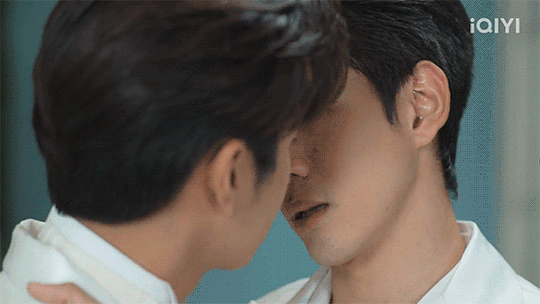
So, okay, Laws of Attraction. You and your 7:00pm-timeslot level of heat are fine by me.
33 notes
·
View notes
Text


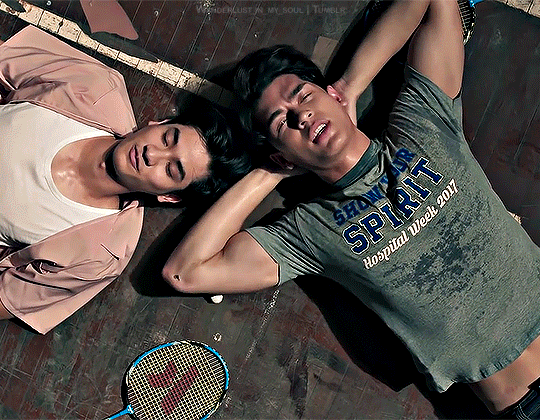
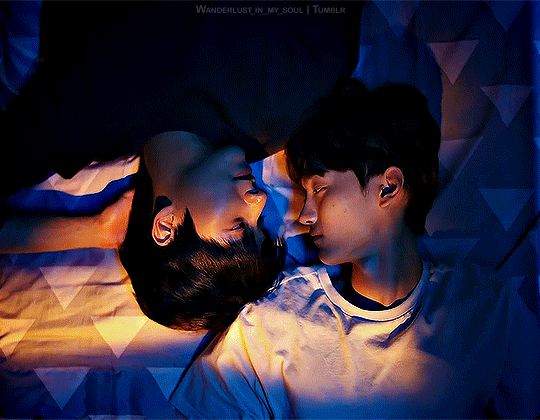
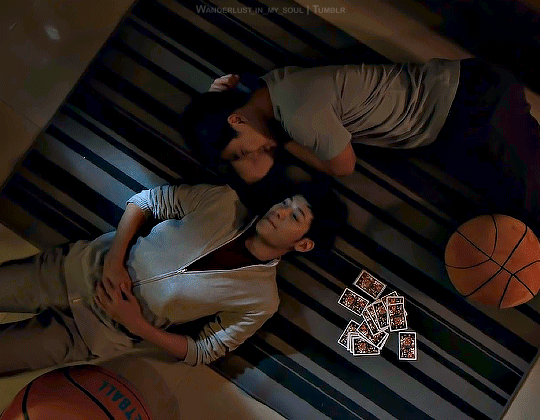




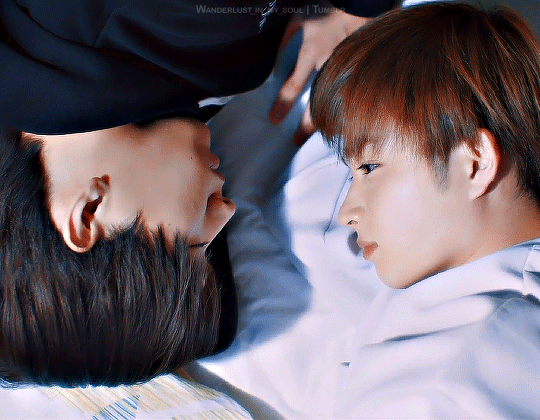
Like Ying & Yang (Part 1/?)
A little Christmas gift for the lovely @lurkingshan 🎄
Last Twilight
My Engineer
3 Will Be Free
The Eighth Sense
He's Coming To Me
You Are Mine
Big Dragon
Kiseki: Dear To Me
KinnPorsche
Fukou-kun wa Kiss Suru Shikanai! aka Mr. Unlucky Has No Choice but to Kiss!
My favorite bl-tropes collection, as most of the times in no particular order.
#bl tropes#multi bl#multibl.edit#tvtropesedit#bl drama#bl series#myedit#lgbtq+#likeyingandyang#last twilight#my engineer the series#3 will be free#the eighth sense#he's coming to me#you are mine the series#big dragon the series#kiseki: dear to me#KinnPorsche#Mr. Unlucky Has No Choice but to Kiss!#Fukou-kun wa Kiss Suru Shikanai!
544 notes
·
View notes
Text
Is this a trope ??!! ( Phi @absolutebl what do you think ?) Can we call it « Please gay people stop being happy in front of me I’m having a bisexual crisis and a crush like I’m already overhelmed. » cut. (Apparently also present in Be my favorite but I don’t know when)


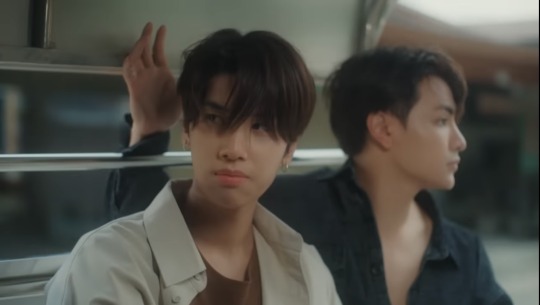
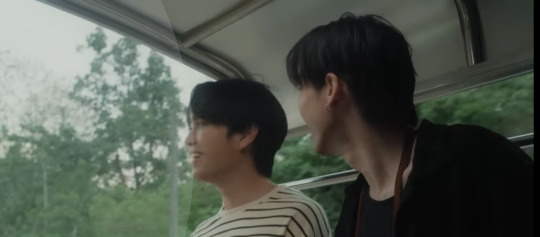
#hidden agenda#stay by my side#thai bl#taiwan bl#romance tropes#bl tropes#This makes me laugh so much
182 notes
·
View notes
Text
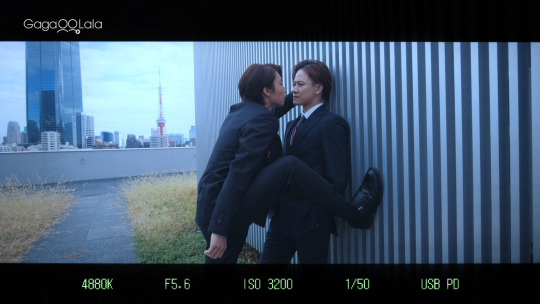
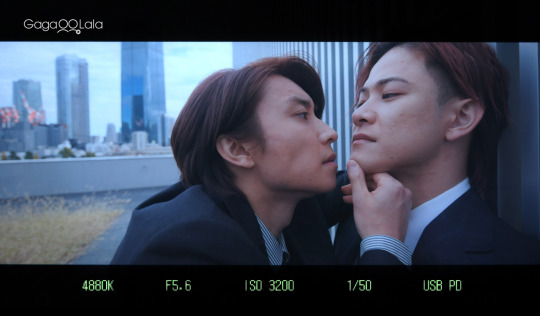
The sound I made at this was illegal. I snort, I choked, I might have died. That's amazing. This is a show that understands not just the tropes but the purpose of the tropes and what makes them funny while also understand what we love about them. And that is beautiful.
#i became the lead in a bl drama#i became the main role of a bl drama#bl drama#bl series#asianlgbtqdramas#asian lgbtq dramas#bl drama no shuen ni narimashita: crank up hen#japanese bl#japanese drama#bl jdrama#jdrama#japanese series#jbl#bl tropes#a show the truly understands the tropes is always a gift
196 notes
·
View notes
Text
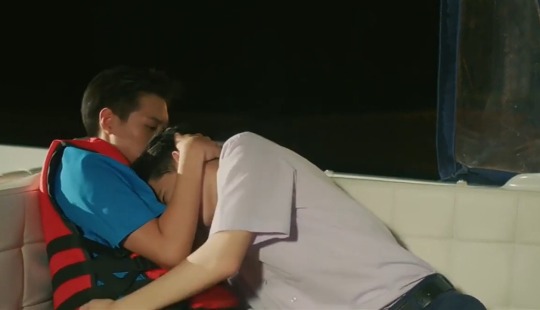


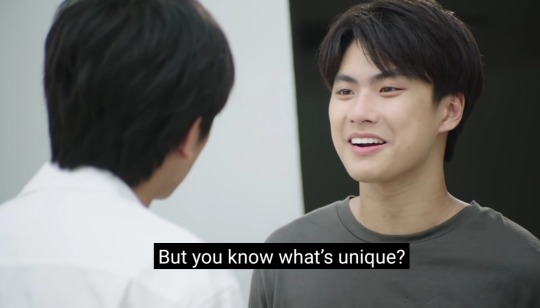

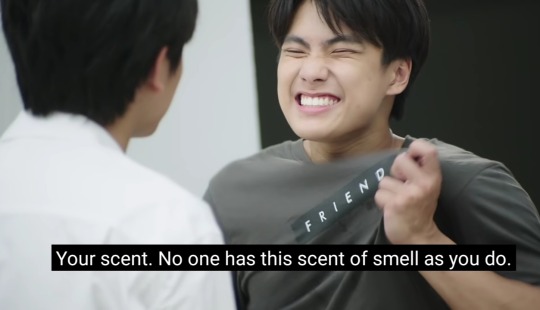


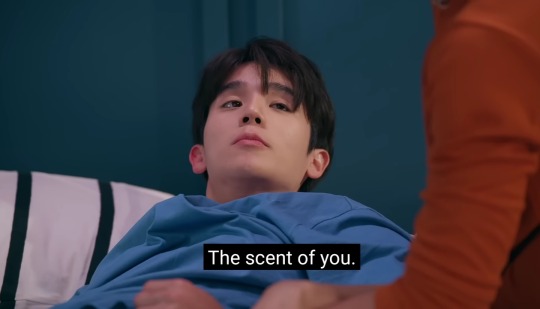
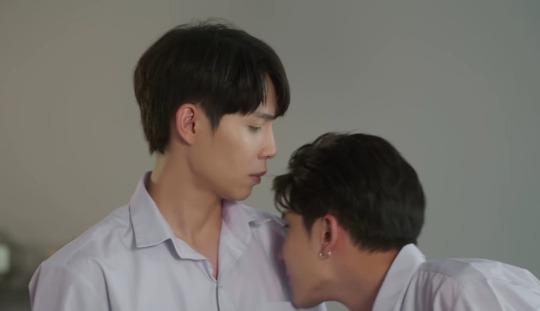


friends wake up new favorite BL trope just dropped
#THE IMPORTANCE OF SMELL IN QUEER MEDIA MY ABSOLUTE BELOVEDEST#trying to think if there's any other BL that used this but nothing comes to mind at the moment#i can think about a couple more clothes sniffing scenes but they're not set up like this#itsay#bad buddy#bad buddy the series#vice versa#vice versa the series#the eclipse#the eclipse the series#bl tropes#m: txt
517 notes
·
View notes
Text
Biting is a love language!
- Part 3
Cuz we’re still not done :)
Link to part 1 and 2
Kiseki: dear to me!
Bai Zong Yi x Fan Ze Rui (episode 8)


Gifs by @tachineko
Chen yi x Ai de

Gif by @my-rose-tinted-glasses

Gif by @zhaozi
Kissable lips
Kim Jun Ho x Choi Min Hyun


Gifs by @smittenskitten
Hidden Agenda
Zo x Joke (Episode 8)

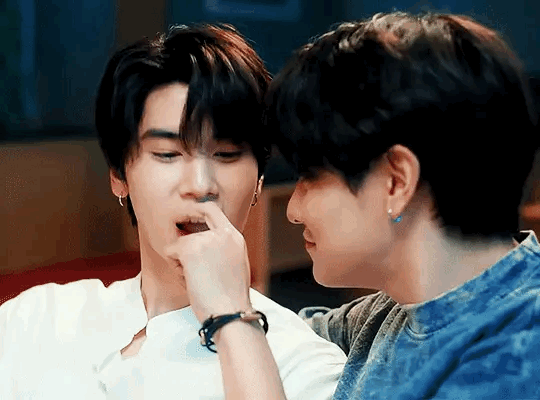
Gifs by @khaotungsfirst
Moonlight Chicken
Jim x Wen (Episode 1 and 8)


Gifs by @maxescheibechlinichacheli
#biting is a love language#already on to part 4!#kiseki being the bl that has both couples biting eachother both ways#kissable lips should have been on this list sooner i mean its called kissable lips and they dure as hell are also bite-able#kiseki: dear to me#kissable lips the series#moonlight chicken the series#hidden agenda#hidden agenda the series#thai bl#korean bl drama#taiwanese bl#bl series#multi bl#bl tropes
146 notes
·
View notes
Text
La Pluie and the subversion of the faen fatale
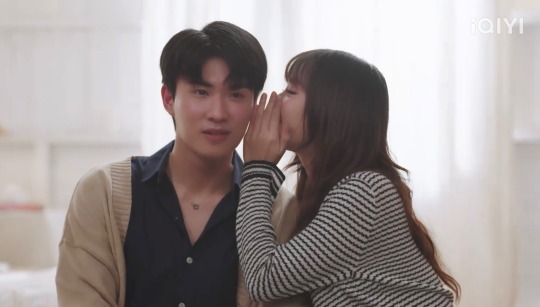
Apparently me posting about La Pluie subverting major romance tropes is now a weekly occurrence, because this show just won’t quit! In this week’s episode, the show continued to give Nara a lot of time and care and generosity, and in doing so, came full circle on another major trope subversion: that of the faen fatale.
If you’ve read or watched any romance, you know the character type I am referring to: this is the ex-girlfriend who shows up to mess with our leads, insert herself into the love story as an obstacle, and generally cause drama and wreak havoc. In romance lit we generally refer to her as the femme fatale, and for the bl genre @absolutebl coined the term faen fatale, because they are endlessly clever. There are many many many examples of this character type in bl, but perhaps no better exemplar than Plern Pleng (my nemesis) from Together With Me.
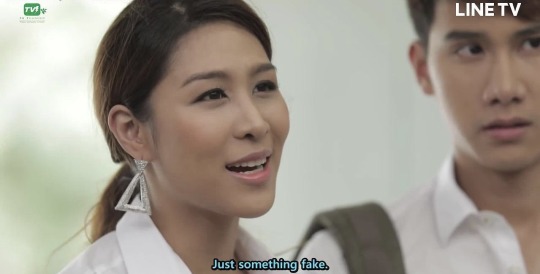
If you’ve seen Together With Me, you know how this is supposed to go. The faen fatale, traditionally, is not a nice person and does not have good intentions. She may be acting from a place of genuine hurt and dejection, but she is here to fuck shit up and cause chaos. She is cold and calculating and ruthless in her attempts to eliminate her competition and win her ex back. She is an archetype deeply steeped in misogyny, and part of the romance and bl genres’ long history of stories steeped in sexism, patriarchy, and heteronormative nonsense that they are only recently beginning to recover from.
So La Pluie? This show that has been subverting romance tropes at every turn? Yeah, they had some things to say with their treatment of Nara, and boy did they deliver in this episode.
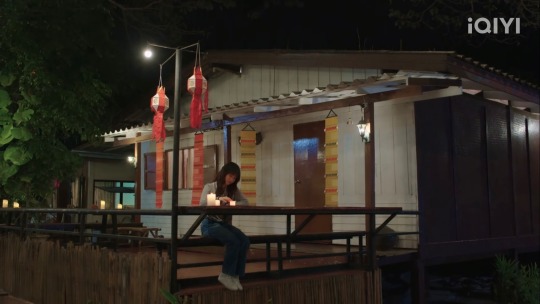
Even before this week, Nara has already been set up to be a sympathetic character. She and Patts had a very good relationship. They loved each other, and they were happy. She broke up with Patts after he formed a rain connection with another hearing loss sufferer, because even though Patts and Tai never actually spoke, and even though Patts told her he was committed to her, she just couldn’t handle him having that kind of connection with someone else, and felt it was inevitable that it would come between them. She ended things with Patts to protect herself. And ultimately, she regretted it.
As she comes back into the story, she is quite straightforward with Patts (and with Tai before she realizes who he is) about her intentions: she regrets breaking up with Patts and wants to get back together. We also see that she had reason to hope, due to a night where Patts drunkenly kissed her shortly before he met Tai. There are no tricks or schemes here - she tells Patts and anyone else who asks straight out what she wants. In her conversation with Tai when they first meet in episode 7, it is established that Tai likes her and wishes her well, a clear signal to the audience that even as she is interfering, she is not meant to be read as a villain. When Patts finally tells her he has met his soulmate and can’t be with her anymore, he does it with gentleness and care, because Nara has done nothing wrong and deserves only kindness from him. And once she realizes who Tai is, Nara backs off from Patts immediately, apologizes and confirms that she is giving up on him, and helps them all find Tai.
That was already great stuff! I felt so warmly toward Nara at the end of episode 8, and I expected that was where the story would leave her.
But La Pluie had more to say!
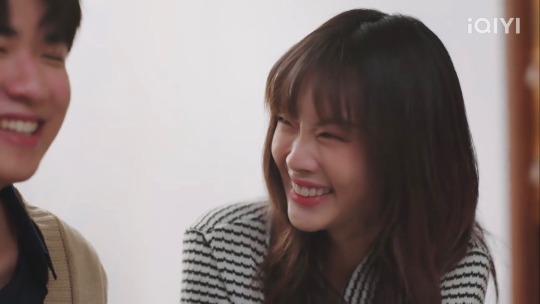
This week we get what is probably the best treatment of an ex-girlfriend character I have ever seen in any drama, not just in bl. Nara does not just conveniently disappear from the narrative now that she’s no longer an obstacle to the romance. She is still here, and her story still matters. So we get to see her go to Tai, apologize to him directly for the misunderstanding between them, and start gossiping and giggling with him about Patts (what did you whisper to him about, girl, inquiring minds want to know).
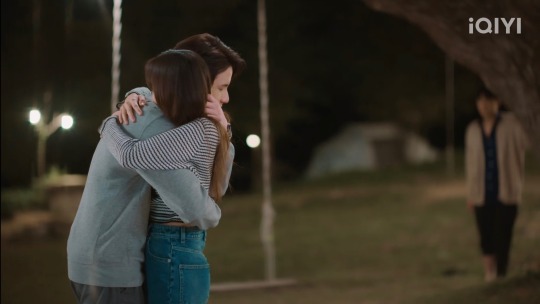
We get to see her receive care and sympathy from the rest of the group and have one final closure conversation with Patts, at Tai’s behest. We get to hear Patts say out loud that their relationship mattered to him, that he still loves and respects her, and that she doesn’t have to disappear from his life just because they can’t be together anymore, all while Tai looks on fondly. She is allowed to cry and express how hard this is for her even as she handles it with absolute grace, both with Patts and then again with Dream. We even get to see her bond with Dream and affirm that she is not going to lose the friends she made through her relationship with Patts (and that Dream in particular may become even more to her in the future, oh my).

I really just have to applaud La Pluie for dedicating story time to this. Every time we think they are about to go down a more traditional dramatic path they surprise us. I continue to be so pleased and impressed with how intentional they are in their dismantling of these classic tropes.
133 notes
·
View notes